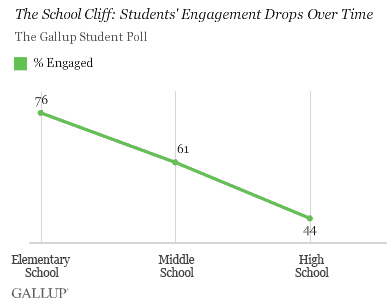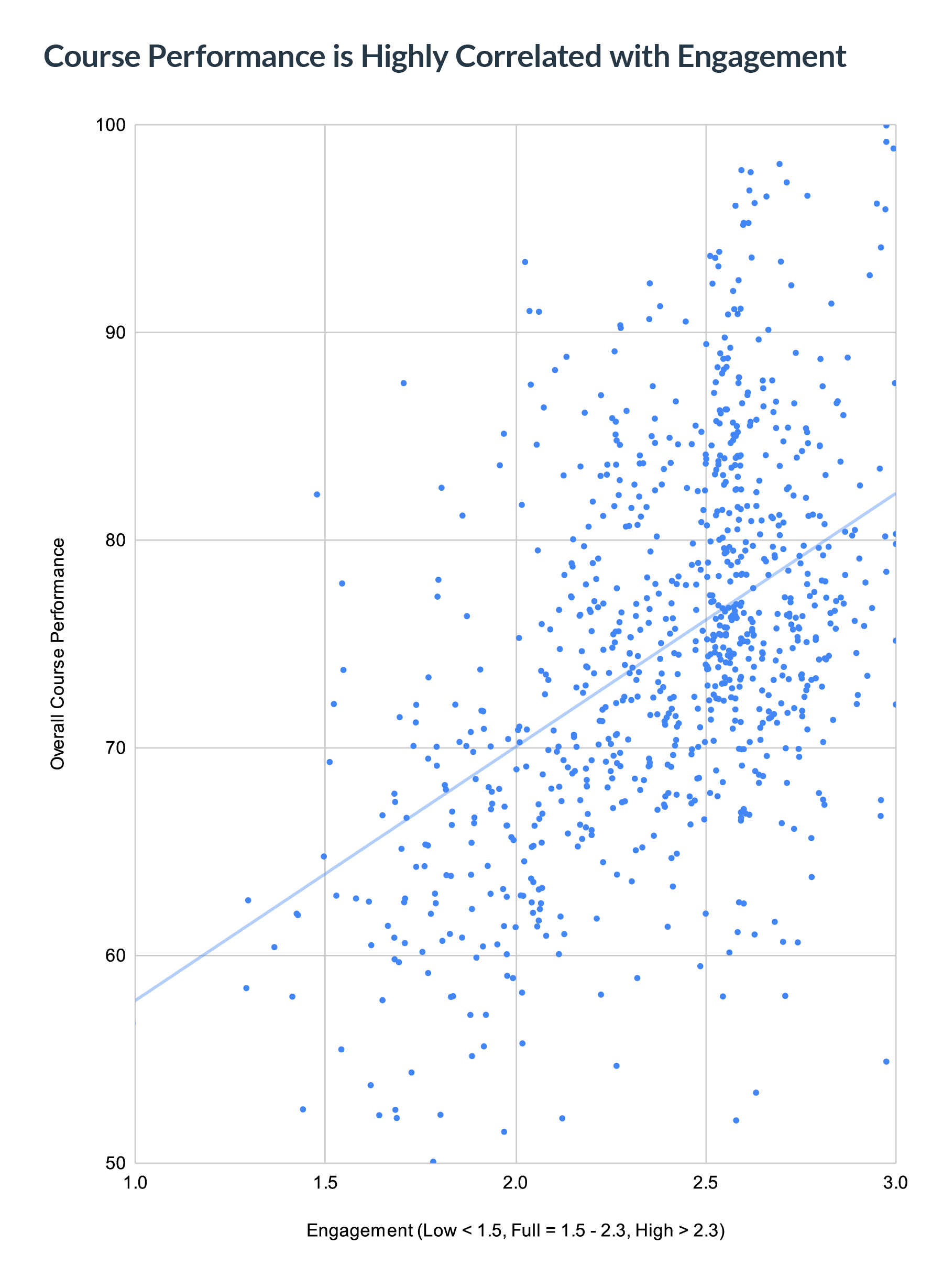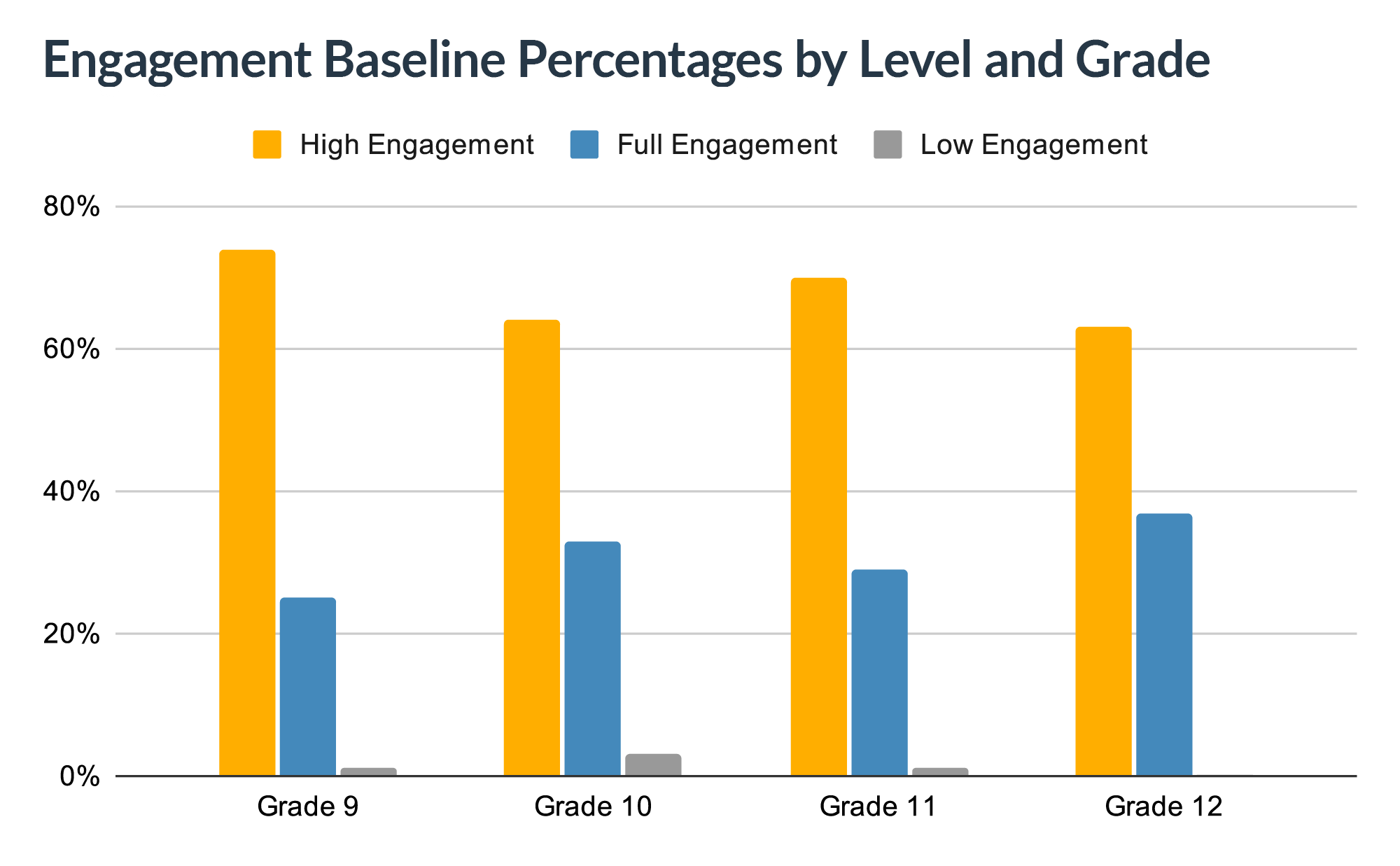The Importance of Engagement
One often hears that in life, the most important thing is just showing up. In education, just showing up is certainly necessary. (After all, truancy laws make the alternative somewhat unpalatable.) But given the performance of most schools, just showing up isn’t sufficient.
Determining what might actually be essential for effective education has been a driving impulse behind our work at Opportunity Education. In developing Quest Forward Learning, Opportunity Education began by conducting a thorough review of the education research and of best practices from established programs to determine what factors drive ownership of learning among adolescent high school students. We did this to address the observation that even though students will spend more time engaged in learning while in high school than at any other time in their lives, most students view school not as an investment but as a tax on their time. Rather than making the most of their studies to lay the groundwork for a successful future, they too often find school boring and irrelevant. In looking for ways to reverse this trend we identified engagement as the potential crucial ingredient to improving ownership of learning.
Corporate leaders have long recognized the importance of engagement as an important ingredient of success in the workplace. The analytics and advisory company Gallup, in a meta-analysis of decades of engagement data from companies, found that high engagement consistently leads to positive outcomes, such as higher productivity, lower absenteeism, higher quality work, and higher job satisfaction. This has matched their findings with students in grades 5 to 12, where engaged students are 2.5 times more likely to say that they get excellent grades and do well in school, and are 4.5 times more hopeful about their futures than disengaged peers.
Gallup has also found that engagement declines every year from grade 5 onward. In over 5 million surveys conducted with students in grades 5 to 12 over the past several years, Gallup reported that 29% of students are “not engaged” and 24% of students are “actively disengaged,” showing that more than half of students do not actually participate in their education. Moreover, while 75% of grade 5 students report high levels of engagement, only 30% of high students do so, with engagement declining steadily year by year.
Their chart dramatically illustrates this decline.

In their news release reporting these findings, Gallup noted that:
Student engagement with school and learning is a gold standard that every parent, teacher, and school strives to achieve. If we were doing right by our students and our future, these numbers would be the absolute opposite. For each year a student progresses in school, they should be more engaged, not less.
In our work at the Quest Forward Academies, we have first-hand insight into the importance of engagement as a predictor of student success. These schools take a high-frequency, low-stakes approach to assessment, with students being assessed in real-time on an almost daily basis and in multiple dimensions of performance, spanning learning, to learning skills, to work skills, to engagement.
What is particularly noteworthy is the high degree of correlation (0.71) we find between engagement and overall performance, as can be seen in the following chart. Here overall performance, exclusive of engagement, is shown on the y-axis, normalized to a possible score of 100, while on the x-axis is engagement, scored on a 0 to 3 scale.

Data from May 28, 2022. n=766
These results help to substantiate the importance of engagement as a leading indicator of performance. They also suggest that by identifying students with low engagement and taking appropriate measures, we can have a sizable impact on their ultimate course performance.
Also notable is the fact that there is only a single student with high performance and low engagement. In a typical classroom, it is not uncommon for high-ability students to be bored and disengage. The fact that students in a Quest Forward Academy classroom take ownership of their learning allows them to spend more time working in areas of interest which increases the chances of remaining engaged.
One other notable feature of the chart above is that almost all students fall at the Full or High levels of engagement. Disaggregating the data by grade level shows that engagement remains high across all four grades.

In every grade level, there are two to three times more students with High Engagement (2.3 to 3.0) than Full Engagement (1.5 to 2.3), and almost no students with Low Engagement (below 1.5). While there are slight dips for grade 10 and grade 12 in the number of students with High Engagement, these are readily explainable by standard phenomena. In the “sophomore slump,” students tend to do worse in their second years as they become more complacent in their studies and find other distractions. With “senioritis,” seniors stop putting out full effort once the colleges have made their decisions.
The fact that Quest Forward Academy students are able to maintain high levels of engagement at every grade is remarkable. That engagement is so clearly correlated with performance shows how important this fact is.
From the beginning, Quest Forward Learning placed engagement at the center of student learning. Our data suggests that we have been successful in this goal. The performance of our students, their success in the college application process, and the findings of Gallup demonstrate the importance of this focus.
Explore the Quest Forward Academies in Omaha, NE and Santa Rosa, CA, or find out how to apply Quest Forward Learning — a method for teaching and learning that engages students through active learning, skill development, and frequent feedback — at your school.
